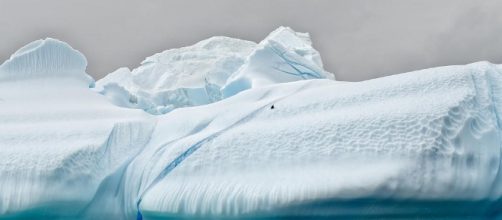It has been known for some time now that a large iceberg will detach from the Larsen C ice shelf in Antarctica. However, scientists have confirmed that the event may now be just days away. Only a three-mile long stretch stands between the ocean and the iceberg splitting. This breaking off will create the largest iceberg ever to be recorded with an area of almost 2,500 square miles, which is roughly equal to the size of Delaware.
Larsen C about to break up
Researchers have been studying and analyzing the ice shelf’s rift for some time now. They have witnessed how the crack has spread steadily.
The iceberg is poised to break off and slowly float away into the Weddell Sea, south of the tip of South America.
Some parts of the ice shelf have already started floating away, leaving a large gap and increasing the strain on the part that remains connected to the larger ice shelf. This is why scientists think that the remaining portion will detach soon, and the enormous iceberg will finally be free. It is expected to around 600 feet thick and will be made out of roughly one trillion tons of ice.
Researchers have stated that even though such a large structure would deteriorate from the continent, it will not be affecting the global sea levels. This is due to the fact that the ice was already floating on the sea even when it was part of the Larsen C ice shelf.
However, some experts believe that such a large portion of the iceberg getting detached would mean that the rest of the Larsen C would also become unstable and could also deteriorate sooner rather than later.
Is climate change to blame for the disintegration?
The scientific community at large remains divided whether this breaking up of the shelf is due to the warming of the climate or whether it is a natural phenomenon.
Some scientists believe that such deterioration events are part of nature itself and have been going on for centuries and millennia, long before human activities started taking their toll on the environment.
However, other researchers point out that this is indeed a result of global warming and the increase in global temperatures.
They point out that even though such events occur naturally, in recent years the frequency of such iceberg formations and ice shelf disintegrations have increased substantially. The Larsen A ice shelf deteriorated back in 1995, and its sibling the Larsen B also disintegrated some years later in 2002. Now, Larsen C’s rift has formed which will produce the biggest iceberg in human history.


